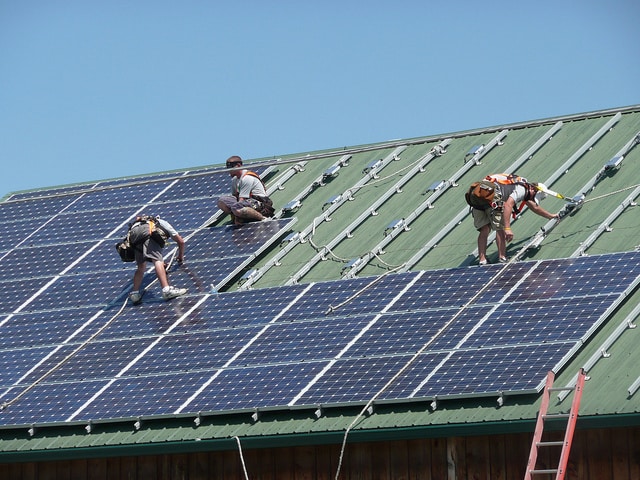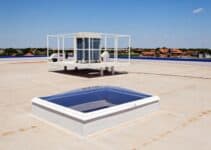With energy costs constantly rising and the threat of climate change a looming presence in everyone’s lives, people are constantly looking for ways to save money while also saving the environment. The various solutions involve the use of renewable, sustainable energy; these include hydroelectric power, geothermal power, and solar power.
All those solutions are feasible, but only solar power is practical for regular people. In fact, California regulators have issued a mandate stating that all new single family homes must have solar panels incorporated. This mandate goes into effect in 2020 and is expected to save $80 on the average utility bill. But how much power do solar panels produce? Is it enough for all the devices and appliances in the average home? Let’s take a closer look.
How Efficient are Solar Panels?
The efficiency of a solar panel refers to its ability to convert sunlight into electricity, the more efficient the panel, the more electricity it creates. In the 1950’s, the average solar panel array was only capable of converting 6% of sunlight energy into electricity. These days, the average home solar panel array can convert 15% of the sun’s energy into electricity, with the most efficient models being up to 22.5% efficient.
However, there are loss factors that can result in a slightly lower energy output than what is on the label. These include:
- Shading – shadows can prevent the panel from receiving the maximum amount of sunlight.
- Temperature – ironically, solar panels perform better at lower temperatures so higher temperatures mean lower efficiency
- Reflectivity – the solar panel will be more efficient if less light is reflected from it, highly efficient panels appear blue or blue-black
What Contributes to a Solar Panel’s Efficiency?
The photovoltaic cells of a solar panel convert the sunlight into electricity, so the more cells in a panel, the more efficient the panel will be. This means that larger solar panels are typically more efficient, but a panel’s efficiency rating is also determined by the quality of the panels as well as their number. Higher quality panels convert more of the sunlight into electricity.
How Much Energy Do Solar Panels Produce?
This depends on the panel’s STC or PTC rating; STC means standard test conditions and indicates how much power a panel will produce under ideal conditions. The manufacturer tests the panel under a condition called peak sun, which is when the sun is at its brightest, and usually lasts for about 4 hours. Peak sun is calculated as 1000 watts of sunlight per square meter of the panel’s surface. The STC rating is how much peak sunlight gets converted into energy.
A panel with an STC rating of 175 watts would convert an hour of sunlight into 175 watts, multiply each panel’s STC rating by the number of panels and you will know how much energy the array produces under peak conditions. You then multiply that number by the amount of hours of peak sunlight the panels get each day and you will know how much energy is produced by the solar panel system.
If each panel has an STC rating of 175 and you have 4 panels, then 175 x 4=700 watts. So, 700 x 4=2800 watts produced during peak sunlight. Note that the solar array also produces power in lower light, so the total energy produced during the day in this example would be higher than 2800 watts.
PTC stands for PVUSA Test Conditions, it is a more complex rating method than the STC system and is meant to provide a more real world power rating. This is because geographical differences and seasonal changes affect the amount of light received by the panels. Speak with your installer to get a better understanding of a solar panel’s power output.
How Much Solar Power Does Your Home Need?
Each home is different, so the amount of power used depends on the number of power consuming devices and how often they are used. This is calculated using kilowatt hours per month. A kilowatt hour (kWh) is the amount of watts a device uses during each hour it is activated.
You can look at your utility bill to find out how much power your home uses per month, but with solar panels, you need to figure out the average energy consumption per day. You can do this by looking at your energy bill, it should show you the amount of kWh used each month, simply divide it by 30 to find out your average kWh consumption each day.
Once you have established a daily usage amount, you can then calculate your solar energy requirements. You need to determine how much you want your solar array to offset your energy bill. If you want to cover 100% of your daily usage, then you solar array needs to generate the equivalent number of kWh.
However, a 100% offset is not a realistic goal for everyone because adverse weather conditions can reduce the efficiency of the panels. It is better to set a goal of 50% to 80%, depending on the amount of sun your home receives at peak hours.
How Many Solar Panels Do You Need?
Once you have calculated your daily energy usage, you then need to decide on the type, and number, of solar panels you need. This is determined mainly by your roof size. Large roofs that can hold several panels can use cheaper and less efficient panels with lower energy outputs.
The reason is that it is possible for a high number of low-efficiency panels to meet your energy needs. If you have limited roof space, then more efficient panels are necessary to convert the maximum amount of solar energy into electricity for your home. You should
Learn Which Solar Panel is Right for You
Choosing the solar panel you need depends on the size of your home and the amount of sunlight it receives. The most efficient panels are more expensive and are better suited for smaller homes that cannot hold as many panels.
The power output of the whole array is more important than the rating of each individual panel. So, if you’re planning a solar installation in Los Angeles, or anywhere else, consult with your installer for advice on the proper setup for your home.






